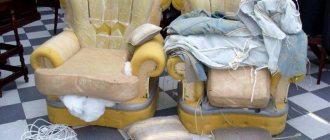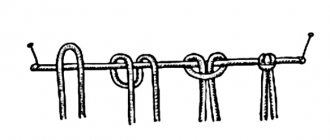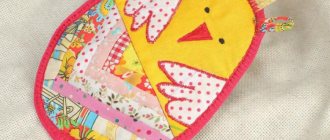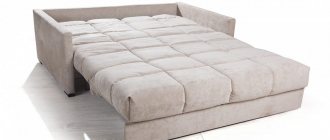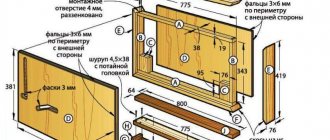Those who like to relax in the country have probably wondered whether to buy themselves a hammock. But if you wish, you can make it yourself, and it will not require much effort. A hammock woven from rope using the macrame technique is easy to make, comfortable and reliable. In addition, it is lightweight and compact. All you need is a little time, effort and money for materials, after which a pleasant rest in the shade of country trees is guaranteed.
Types of hammocks: how to determine what size and shape to make a hammock?
First, you need to understand what kind of hammock you need to make. They come, for example, in different sizes:
- Small - approximately 140 cm wide. Intended for one person. Ideal for introverts who like to spend time reading or thinking
- Medium - from 160 cm in width. Suitable for two. What you need for lovers or for get-togethers with friends
- Large ones - starting from 180 cm. Such hammocks can already support several people. A real family corner!
Before you start constructing a hammock, it is important to understand whether it will support the weight of everyone.
Now you can think about your preferred hammock shape. So, a cocoon is the simplest and most convenient option for beginners. Its advantages:
- Such devices are easier to make and operate.
- They are easily transported due to their simple design and low weight.
- To fall out of the cocoon, you need to try hard
- The hammock fits its name perfectly – it truly envelops you like a cocoon. This gives the greatest possible relaxation
The disadvantages are the following:
- Getting into the hammock itself can be difficult
- Changing position is also difficult
Such a hammock really resembles a cocoon.
Round hammocks, together with hanging chairs, are much more difficult to manufacture and transport. But you can relax in them with company. Mainly used for sitting or reclining rest.
Hammock chair - more massive design
Video description
There are several types of hammocks on the market. Therefore, if you want to buy fabric for a hammock, it is very important to take into account the design features and type of product in order to correctly and accurately select the amount of material required. Brazilian hammocks can be suspended on ropes (a transverse traverse and special straps are used), and are intended for those who prefer comfort. The width of the hammock is 2 m. The design itself is quite complex and the product is expensive. It assumes an increased load, so more supports are required.
Hammocks using Mexican technology are made from fabrics or ropes Source proekt-sam.ru
What is a swing chair?
Visually, the hanging chair resembles a cocoon, which can be attached in several ways: to the ceiling, or to a support firmly standing on the ground. This is an extremely mobile thing that can easily be installed in any part of the house or yard.
Practicality and comfort are his middle name. But besides this, there are other advantages of hanging chairs, which it would be unfair to keep silent about.
Creates comfortable conditions for relaxation. The slow rocking of the chair allows you to escape from all everyday thoughts and simply dissolve into yourself.
Stylish design. The manufacture of such a furniture set can be made from various materials that will ideally complement a particular style.
Originality. Everyone can create a masterpiece with their own hands, and be sure that no one else has an identical thing. These chairs are suitable for a summer house, home, and even an office.
Crochet for giants
First of all, they make the shuttle. To increase its dimensions, use bamboo sticks. They are glued and fixed with threads. The pin is made longer using a silicone tube. About 25 meters of cord are wound around the resulting part. This is enough for 8 rows. Connect two canes, put a starting loop on one of them.
Instead of a board, you can simply take a credit or telephone card.
The bottom line is that if you plan to hang a hammock one meter wide, then double the number of cells (1 m = 20 loops). It turns out that the leading row consists of 39 stitches. Knit the fabric, taking into account the basic rules:
- connecting nodes are formed according to the principle of a hand stitch “back needle”;
- When tightening the loops, you should firmly hold the cross threads with your fingers;
- the tension of the 3 ropes above the board should be the same;
- in the 1st and last rows there are 20 loops, and in all the rest there are 19;
- for ease of operation, the canvas is put on the tube;
- When the cord is twisted, it must be untwisted.
Weaving technology is best viewed on video. It shows how to properly hold the card and maneuver the shuttle
It is worth noting that each grid cell is done in three passes:
- first, a loop is placed on the board, resting it against the cross weave, and then connected to the top cell;
- at the next stage, the rope is threaded through two threads;
- Finally, a knot is made in the image of a “back needle” seam.
When knitting the penultimate row, add another loop at the end. In this case, the starting ear is cut off and cauterized so that it does not crumble.
Creating a hanging option
Every craftsman can make a hammock with his own hands. The preparatory work consists of choosing the material. You also need to prepare the necessary tools, create a product diagram or pattern if the hammock will be made of fabric. The step-by-step production of a street version without the use of a frame is very simple:
- First, a rectangle with sides of 240 and 160 cm is drawn on paper.
- It is necessary to take into account that the canvas will have a hem, so you need to leave 7 cm on each side.
- Based on the pattern, the required length of fabric is selected.
If you plan to make a product using the macrame technique, then you need to decide in advance on the weaving pattern. For example, the fabric can be mesh or patterned. It all depends on the skills of the craftsman. Products are knitted not only with knitting needles, but also with crochet. For a hammock, buy thick and durable threads. It must be taken into account that the hook or knitting needles must be of the required size. As an experiment, you can try making a thing from a strong cord or ropes.
For example, a hammock is knitted from simple double crochets or garter stitch. To decorate the product, beautiful openwork threads or fringe are sewn on the sides. Before you start making a hammock, the dimensions of the structure are calculated in advance. The material must be in reserve.
Step-by-step instruction
If you wish, you can weave a hammock from a rope with your own hands within a day. For this you will need:
- Three meters of thick fabric.
- 25 eyelets.
- Two wooden blocks.
- Two metal rings.
- Two hooks and 30 m of thick cord.
Completing the work consists of several steps: first you need to formulate an idea, and then cut the fabric to the required sizes. Each edge of the product is turned inward by 7 cm. The fabric is stitched on a sewing machine along the entire perimeter. If the quality of the material is strong and does not crumble, then the item is stitched only from the fastening side. Next, markings are made for installing the eyelets. There should be at least 10 of them on each side. Then holes are cut for them.
The work is done using a stationery knife or small scissors. Then the eyelets are installed in their places. When doing work, the main thing is not to confuse the front and back sides. The bars are prepared in advance. Holes are drilled in them at the same distance where the eyelets were located on the fabric. The cord is pulled and the tension is controlled. The lace is sequentially threaded through the ring and eyelets.
To secure the cords, a special wooden frame is used. Hooks are driven into the support, on which the canvas is subsequently hung. You can see a diagram of weaving a hammock with your own hands on the Internet. Everything is described in detail there in the pictures. When knitting, the main thing is not to get confused, then the pattern will turn out clear and competent.
Adding decorative elements
Every person wants to have something that others don’t have. Such a product will favorably emphasize individuality and give the interior a finished look. A DIY hammock can be decorated with some unusual elements. For example, you can sew a padding polyester and place it between two layers of material. Thus, it will be convenient and comfortable to sit on the hammock. The threads of the product will not dig into the skin. Some people place a blanket and pillow on the hammock. Then you can relax and unwind on a hammock.
For functionality of the product, pockets are sewn on the sides. You can put various small things there, for example, a bottle of water, glasses, a phone, a tablet or a book. If the hammock is knitted, then you can sew a beautiful openwork border to it. Effective stripes are made using a crochet hook or knitting needles. If the canvas is made in the macrame style, then it is appropriate to add tassels or fringe to it. Additional accessories are made from the same material as the hammock itself. Then the thing will look organic.
Originally posted 2018-08-29 08:57:47.
Typesetting row
Usually, along the edges, the mesh threads are attached to wooden rods, but they can also be brought into a corner to be grabbed by a metal ring (this will be discussed below). The ends of the ropes from which work begins are called a set row. In practice, more than one method of attaching threads is used; let’s look at the 4 most common ones.
Method 1: Horizontal hinge jumper on the front side
- The thread is folded in half and placed on a wooden handle with the loop facing up.
- The loop bends back and goes under the rod.
- Both ends are threaded into the resulting loop and tightened.
Method 2: crossbar on the wrong side
- The rope is folded in half and placed under the wooden base with the loop facing up.
- The thread folded into a ring is bent forward and wound over the rod.
- Both ends are inserted into the created loop and tightened.
Method 3: Double Hitch (Extended or Extended Hitch)
The crossbars remained on the wrong side. The typesetting row made in this way is denser; the wooden handle does not show through it.
- The thread folded in half is secured using method No. 2.
- Each end (separately) performs one turn.
- The thread that goes around the base is pulled over the loop formed at the bottom.
The attachment to the handle will be even tighter if you make more turns at each end. The same typesetting row can be made so that the bends of the nodes are on the front side, but such a solution looks less neat.
Method 4: Attaching only one end of the thread to the rod
- The upper end of the thread placed under the cutting is fixed at a distance of 2–3 cm from it.
- The lower end of the thread is draped over the base to the right of the upper, then, going around it, it makes a turn; the thread is pulled down.
- The next turn is performed to the left of the upper end, the operation is repeated in a mirror manner. After tightening it, the knot is ready.
When using threads of different colors or different lengths, several fastening methods can be used. For example, first hang one rope using method No. 3, not forgetting to leave a gap in the middle of the fastening. Then a second thread is tied to the left space using method No. 2.
How to make a hammock chair with your own hands
When weaving a hanging chair, you can use absolutely any pattern. The simplest is considered to be mesh weaving using a square knot. A square knot is a combination of a left-handed and a right-handed flat knot.
You can make a hammock chair unusual and original using interesting patterns.
Master class on making a hammock chair using the macrame technique:
- Cut 20 pieces of synthetic cord 10 times the diameter of the hoop. Fold each rope in half and attach it to the hoop, distributing the threads in the upper half. You should have twenty groups, two threads each.
- Count the 8th and 9th group of threads from the first group on the left. Follow them down from the hoop 7 cm and tie these 4 threads into a square knot, tightening it well.
- Tie the 10th and 11th groups, as well as the 12th and 13th groups in the same way.
- Count the 7th group from the left, measure along it 7 cm down from the hoop, add to the threads of this group 1 and 2 the cord coming out of the first square knot. Tie these 4 strands into a square knot.
- Perform two more such knots further along the 2nd row. Connect the 3rd and 4th threads coming out of the 3rd square knot of the first row with the threads of group 14 and tie them into a square knot.
- Weave the 4th row using the mesh technique, making the jumpers square, adding 6 and 15 groups of threads to it.
- To the 5th row add the 5th and 16th group of threads.
- To the 6th row add the 4th and 17th group of threads.
- The 3rd and 18th group of threads are added to the 7th row.
- After the 7th row, two threads coming out of the square knot of the 7th row are tightly tied to the hoop on both sides. Then weaving the hammock is done without them.
- In the 8th row, the 2nd and 19th group of threads are added, and after it, two outer threads coming from the last knot of this row are tied on both sides of the hoop.
- In the 9th row, 1 and 20 threads are added, and after it, two threads coming out of the last square knot are attached to the hoop on both sides.
- Next, you must knit five more rows, tying two strands of the outermost knots to the sides of the hoop, after each row.
- Excess threads hanging from the braided circle need to be trimmed.
- Place the braided and non-braided hoop together with the braided one so that they touch on one side, and wrap the cord around the contact point.
- Connect the hoops on the other side by attaching them to different ends of the two planks.
- Braid the back of the hammock chair according to the pattern described above. You need to weave this part of the hammock from top to bottom, tying the extra ends of the threads to the lower part of the back or to the seat.
Remove the wooden planks and strengthen the structure by tying two thick cords between the back and seat. Attach thick straps to the hammock and hang the hammock.
Braided device
Another option for making a hammock is weaving. To do this, you don’t need to have deep knowledge of weaving macrame with your own hands, you just need to learn how to make a simple knot. So, the necessary list of tools:
- two strong wooden planks 1000x30x20 cm;
- cotton cord - 200 m;
- rings with a diameter of 10 cm - 2 pcs.
DIY owl hammock
Owl Nanny post pinned
Sovolet is a special sensory hammock made of very elastic material - lycra. Climbing into it, the child feels a feeling of weightlessness, freedom, and soaring. And at the same time – amazing comfort and safety in the soft but reliable “embrace” of the hammock.
Sovolet provides the ability to twist and rotate in completely different planes and in almost any imaginable body position. Thus, he effectively trains and fine-tunes the child’s vestibular system. But that is not all. Sovolet is remarkable in that the entire weight of the baby is converted into pressure evenly distributed over the surface of the body. This pressure provides rich “food” to the child’s proprioceptive system and contributes to the formation of the so-called “body diagram”. – A picture in our head that shows where our arms and legs are currently located, and what they are doing now. And an accurate body diagram is not only motor dexterity, it is also the key to future academic success! And, of course, Sovolet is just amazing fun
And while we are waiting for the start of the “Product of Summer” promotion, any Sovolet (Owl has two types) can be purchased with an excellent discount: 10%. To do this you just need:
— select Sovolet PRO or home; — place it in the cart; — go to cart; — enter the coupon code in the special field. The coupon code is: SUMMER PRODUCT; — press the green “apply coupon” button.
That's it, the discount on Sovolet is yours. Don't forget about Sovobonuses. With their help you can increase your discount up to 20%!
Source
What is woven for home interior decor using macrame technique?
With the advent of knitted yarn and multi-colored cords, the weaving technique received a new impetus for development. Today, things made using the macrame technique once again decorate our homes.
There are a lot of possibilities for what can be made using the macrame technique for decoration:
- Wall panels for the home.
- Macrame pillows and blankets, not only made from cord, but also from felting yarn.
- Curtains for windows, doorways, interior partitions for the home.
- Lamps and lampshades for the home.
- Macrame bags.
- Tracks on the table.
- Napkins and hot mats.
- Macrame carpets and floor runners for home decor using the macrame technique.
- Vases for the home.
- Hanging chairs and hammocks.
- Macrame baskets for home decor.
- New Year's panels and toys for the Christmas tree.
It’s probably impossible to list everything! It's amazing that macrame home decor has become so popular and diverse.
What is home decor made from using macrame technique?
- Cotton cord is the most common material. It can be either natural white or linen, or painted in any color of the rainbow. The thickness of the cord for macrame is also different.
- Synthetic cord.
- Knitting yarn.
- Yarn for felting in skeins.
Macrame wall panels for home decor
Wall panels for home decor can be found today in classic home interiors and in boho style. This is perhaps the most popular thing in the macrame technique and at the same time the most voluminous.
To work, you will need a lot of cord at once, the ability to weave different knots and connect the threads during the weaving process, and hide the joints. You will also have to get some driftwood and process it in order to attach the panel to it. The snag can be replaced with a round or flat stick, preferably made of natural wood. A novice needlewoman is unlikely to cope with such work.
Macrame panel for home decor on a straight stick
Macrame panel for home decor on a wooden driftwood.
Do it yourself
If you prepare the drawings in advance, it will be much easier for you to complete all the work.
We will look at 2 options on how you can make yourself an original and practical hanging chair using PVC pipes.
- With weaving
. The idea is to take a couple of rings for the base and weave the chair around them; - With case
. Here the frame will be placed inside the soft case. For those who are not familiar with the macrame technique, for example, this option is much simpler.
But first of all you need to decide on the size. Think or look at other drawings about what diameter pipes you need. The question is how to get the exact diameter. There is an answer.
Elementary calculations. Therefore, there should be no problems with this.
Next, it is equally important to understand how to bend the pipe. PVC and polypropylene pipes cannot simply be bent by hand. They then lose their properties
Here are the options:
They then lose their properties. Here are the options:
- use special tools for bending plastic pipes;
- heat the material and then give it the desired shape;
- pour hot sand inside and bend the pipe into a circle.
Connecting the 2 ends is not difficult. You can use some kind of inserts in the form of a piece of wood. Special glue is also used. But objectively, the best solution would be a bushing together with welding.
Wicker chair
To weave a hanging chair based on a pair of pipe rings, you need to take:
- 2 rings with a diameter of about 70 and 110 cm;
- approximately 800-900 meters of cord;
- 12 meters of slings;
- 2 wooden rods;
- a couple of thick cords;
- roulette;
- scissors, etc.
Choose a cord width of 4 mm or more. It is better to use a pipe diameter of at least 35 mm. The thicker the pipes, the more weight they can support.
Next you need to do the following:
- Connect two hoops using a winding on one side, pulling the cord well. This is where your feet will be located in the future. At the bottom there is a ring with a smaller diameter, at the top with a larger one;
- The pipes themselves along their entire length should also be wrapped in several layers for softness and decorativeness;
- After this, the process of weaving the base (seat) begins using the macrame method. Choose the ornament yourself;
- Next you need to make the backs. The top ring will be raised at approximately 45 degrees. Due to the difference in the distance between the lower and upper rings, space is created for weaving the back.
At the final stage, the slings are attached and the structure is suspended.
Armchair with cover
If you are far from the weaving technique, then you can use another method. Here the task is much simpler. The fabric cover will allow you to get a soft, but at the same time durable hanging chair.
Here you need to take:
- one durable hoop with a diameter of 90-100 cm;
- a piece of durable fabric;
- braid;
- metal buckles;
- about 8 meters of sling;
- metal ring for hanging;
- sewing machine;
- scissors, needles, etc.
This is not to say that everything is extremely simple here. There are some nuances.
The process of making a hanging chair with a fabric cover can be described as follows:
- You need to make a cover out of fabric. First, cut a couple of squares of the same size, fold them 4 times, and cut out a circle;
- After ironing the circles, cut out holes for the slings;
- Next, the elements are connected to each other. When sewing the circles together, be sure to leave room to insert the ring later;
- Having made the cover, turn it right side out, make an indent of 5 cm on each edge;
- Place a ring inside the case and then sew it with strong threads;
- The case should be filled with padding polyester. Or any other material of your choice;
- Slings are installed, and with their help the structure is suspended. It can be applied to the ceiling, to a tree, to a beam in a private wooden house, etc.
At this point the manufacturing process can be considered complete.
Scheme for making a hoop
A circle as a shape is often used to make a hanging shell chair frame using the macrame method, a fabric chair cover, a hammock chair, a cocoon, and a chair on a wooden base. You can make a circle from a metal or metal-plastic tube. A metal exercise machine of the same name, if available, is also suitable.
The finished design of a hanging chair can be upholstered with foam rubber, polyester padding, fabric, woven with screws or ropes. You can trim the edges with decorative ribbons or braid, and decorate with beads.
Tools and materials
A hanging wood frame is most often used for straighter shapes. Wooden pallets are often used as the base for these chairs. These can be single boards or ready-made structures that are simply sawn into the required blocks.
To make a slatted hammock structure you will need:
- hacksaw or jigsaw;
- drill;
- wood drills;
- sandpaper for surface treatment.
Metal-plastic is easy to saw; you don’t need to bend it using special equipment, since they are sold in the form of coils, which means they already have a round shape. To make the frame you will need: self-tapping screws, a screwdriver, a wooden or metal sleeve.
Metal tubes form the strongest structure for chairs of any shape, whether round or joined at the top and splayed down. Welding will help in this matter. The work will require an experienced person and a bending machine. But this frame will be the heaviest, which means it will require strong fastening. This option will take longer.
Manufacturing
Initially, the wood needs to be shaped, sanded, treated with insect repellent, and painted to protect against the elements. Attached to the joint with wood glue and, if necessary, supplemented with screws or bushings.
The metal-plastic base is easily fixed in the ring. Fastening occurs using a wooden or plastic sleeve of smaller diameter, secured with stainless steel screws on both sides of the joint, without extending beyond the sleeve.
The process of bending a metal pipe is quite prosaic if you have special equipment. Some experience with the machine is required. Pipe bending is available upon request.
Welding requires a specific location and skill level. It is not recommended to work with welding without special skills. The number of subscriptions depends on the required form. This could be a simple repeating circle or the shape of a chair.
The frame is ready, how to make a chair out of it?
How to make a hammock at home?
The final look of your hammock will depend on what you do best: those who like to knit will be able to knit a hammock themselves, those who like to sew will sew it. Well, masters of macrame weaving will be able to surprise their guests with a hammock made of ropes.
Before cutting a fabric hammock, you need to make a preliminary drawing of the product. Consider a regular frameless hammock. You need to draw a rectangle approximately 230*150 cm. Don't forget about the extra 5 cm for hems.
To accurately determine the length of the hammock, you need to focus on the height of the tallest family member. The length of the product is equal to the height of such a family member + 60 cm. If you have strong sewing skills and your friend has a sewing machine, you can sew a hammock. Additionally, you will need a machine to install eyelets.
If you plan to knit a hammock, take a hook or knitting needles, a sewing needle, and don’t forget about scissors. Regardless of the material of the product, take a drill to attach the product to the supports. Using a shovel, you can install the support posts.
The instructions on how to make a hammock are very easy.
- The first step is to create a pattern. Make marks for the eyelets on the small sides.
- The second step is to drill holes on the prepared supports. Pull the cord. The tension can be adjusted by successively passing the cord through the ring and eyelets.
- The third step is to drive hooks into the supports. Now you can hang the hammock.
After installing the hammock, check how stable the structure is. Support posts must be dug at least 1 m into the ground. The distance between the supports should be from 3 m. The fastening from the ground should be at least 1-1.5 m.
DIY hammock ideas are varied. They are limited only by your imagination, skills and means.
More interesting than the Lego game
Assembling a structure is perhaps one of the most exciting activities. The spacer is suspended using cables. Marks are made at the ends of the threads so that knots can be tied. All 10 cords are lowered into each hole. The marks are fixed with needles.
Now you need a hanging weight. Water is filled into the bottle so that it weighs ½ the mass of the spacer, that is, 0.5 kg. She is tied using a boa constrictor knot. And at the end of the cable a hook made of a pin is attached.
As a result, a bottle weight is attached to each rope. When tensioning it, make a mark under the spacer with a marker. After the procedure, the pins and bar are removed. The mesh is put on the handle, the warp threads are passed through the holes and tied to the openwork fabric at the place of the marks. The excess is cut off and the ends are melted. The edging cable is threaded around the perimeter of the hanging hammock, having previously connected it to the fastening. The second side is made according to the same scheme. A real work of art is ready for the garden museum.
Peculiarities
The features of the hammock chair include:
- safety and environmental friendliness (due to the use of natural and non-toxic materials);
- original design;
- simplicity and ease of use;
- Possibility of use at any time of the year;
- ease of care;
- long service life.
A hammock chair is a soft version of a hanging structure. On soft pillows that sway from side to side, it is pleasant to spend summer evenings in the fresh air.
Advantages
The advantages of a hammock chair include:
- Wide selection of models. Such products differ in shapes, designs, colors, and materials of manufacture. Some chairs are something like a cocoon, others are a product with a soft fabric seat.
- Possibility of self-production. To do this, you will need to use minimal sewing skills and prepare supplies.
- A hammock chair can be framed or frameless. Both models do not have sharp corners or parts, which makes them popular among small users.
- The textile can be easily detached from the product and washed in an automatic machine.
Device
A hammock chair usually has a fairly simple design. It consists of:
- Fabric seat. For these purposes, a tight cut is most often used.
- Crossbars, which serve as a strapping element and distribute the load. The seat is tied to the crossbar.
- Sling. To do this, use a strong rope or braided cord.
- Suspension. For these purposes, chains for ceiling mounting or rings with a spring are used.
Materials
A hammock chair can be made of different materials:
- rattan or self-tapping screws;
- with a plastic or acrylic base;
- made of dense fabrics without a frame;
- non-standard models in the form of a drop.
Attention: when using the product outdoors, durable and wear-resistant materials are selected. They must withstand negative environmental factors and be resistant to rain, direct sunlight, ultraviolet rays and extreme temperatures. When choosing materials for making a hammock chair, the type of design and model are taken into account. The most common:
The most common:
As for the materials for making a hammock, the type of design and model are taken into account. The most common:
- Macrame. Thus, the products are formed on a loom, which is woven from silk cord that is soft to the touch. In this way, original products with fringe and various decorative elements are created.
- Tarpaulin. It is a fairly durable material and is great for outdoor use. The tarpaulin can withstand heavy loads of up to 300 kg. It is not afraid of sudden changes in temperature, high humidity, or direct sunlight. The only drawback is the small selection of color palettes. This model will look harmonious on the veranda, in the garden or in the gazebo.
- Textile. For these purposes, dense fabric is selected that can withstand weight up to 150 kg. In addition, the selected material should not stretch or deform during operation. To increase the strength of the material, it is recommended to fold it in two layers. Light and easily soiled colors should be avoided. Especially when using the product outdoors.
Design
When choosing a product design, consider where and by whom it will be used. Any options (both fabric and wicker) are suitable for a dacha; it all depends on personal taste. The choice of colors is also unlimited
If you choose a hammock chair for your home, you should take into account the style of the decor. Wicker models in natural colors (beige, brown) will fit perfectly into the eco-style. This can be either a model with a round base or a soft version.
In the second case, the cords can be secured to an untreated stick with small knots
This can be a model with a round base, or a soft version. In the second case, the cords can be secured to an untreated stick with small knots.
If you like boho and ethnic styles, a model with tassels and colorful pillows will suit you. Both wickerwork and canvas models will fit well into a rustic setting (country, Provence).
Both snow-white and blue “cobwebs” will look good in a Mediterranean interior. The Scandinavian style is characterized by white, gray, and beige tones. In the last two cases, it is better to avoid an abundance of details. The product should be elegant, but laconic. It is difficult to fit a hammock chair into modern style (modern, minimalism, hi-tech). Typically, plastic models and artificially painted rattan options are chosen for such rooms. However, if you wish, you can not only not disturb the integrity of the interior, but even decorate it with a soft hammock.
For example, you can take a wicker design on a hoop of a modest design in white, gray, beige or black. Decorate it with a fluffy rug or stylish pillows, and the chair will immediately transform.
Weaving macrame chairs: making the base
Instead of rings, you can buy sports hoops in the store or make them yourself from metal-plastic pipes with a diameter of 35 mm.
To calculate the required pipe length, you need to multiply the diameter of the required circle by 3.14.
Experienced needlewomen recommend first making accurate calculations of the chair and thinking through its design.
To connect the ends of a metal-plastic tube bent into a circle, you can use a small wooden sleeve, which must be secured with self-tapping screws. It is best if the physically difficult work of bending metal-plastic pipes into a ring is performed by a man.
After the rings are ready, they need to be wrapped with thread. The turns of the cord should be placed close to each other with good tension. The larger circle is used for the back, and the smaller one for the seat.
Wooden chair hammock
This, of course, is not a standard hammock chair, rather a hanging bed, but the idea is good. The author calls his design a garden hammock swing - 140 cm long and 100 cm wide - maybe a swing. This thing was assembled from the remains of a dismantled roof, an old swing and loops, ropes and other useful things found in the garage. Rainwater drains well through small cracks at the bottom.
Step 1: Making the Frame and Backstop
- Cut 2 boards 140 cm each, sides 20 cm high. Wood 3.5 cm thick.
- Cut 2 boards 90 cm each, sides 20 cm high. Wood 3.5 cm thick.
- Install 5cm x 5cm corner stops.
- Cut and attach a 1 x 90cm cross brace to hold the middle.
- Cut and secure the side stops that will hold the ends of the cross boards
- Screw the two backrest supports to the sides.
- Check that the rear seat supports are tight and not loose.
- In the end you should have a solid (and quite heavy) structure.
Step 2: Assembly
- Cut the boards to the required length, in this case 90 cm, and secure.
- Fill the entire bottom with boards.
- Cut off the back strips. The shaft was 100 cm x 5 cm x 2.5 cm (slab thickness).
- Use thin pieces of plywood as spacers.
- Add additional support to the top of the backrests.
- Drill 4 holes, one for each corner, and screw in the rings.
Step 3: Top Support
- Take 5x10 cm pins. Screw the pairs together, the supports will be 2 x 10x10 cm.
- Screw a 20 cm x 5 cm board onto the outside wall of the house.
- Attach chains or rope to hold the entire fixture in place.
Treat and paint the wood, lay out the mattress, add the pillows - it's time to relax.
Photo source www.instructables.com/id/Garden-Patio-Swing-Bed-When-a-Simple-Hammock-Just-/
Unusual hammock chair
This hammock chair is literally made of wood, the seat is made from sawn parts of thick branches. The work, of course, will be painstaking, but the chair looks original.
The first problem is to collect suitable material. Branches found on the ground may be too dry and weak, so will need to be cut from the tree
The important thing here is not to cause harm and to do it wisely. Poor work can kill the tree or make it sick
Therefore, it is better to consult with competent gardeners on this issue.
Depending on the design, you will likely need hundreds of sections.
When you have cut the required number of sections, you need to drill holes with a diameter of approximately 5 mm. Make sure the hole is in the center. Then use synthetic rope or natural rope to create one large rug. Two ropes need to be threaded through the hole and then separated. The two ropes are then returned and threaded through the next section. In general, look at the photo, the author tried to show this in the drawing.
After a while, you will end up with a long and heavy carpet. Make a good knot at each end, you can give the chair a special shape. If you used synthetic ropes, singe the ends with a lighter.
A spider web mount will look good in the woods, but if you're using the hammock chair indoors, you can go with a simple steel frame. Get creative and make your own design.
By Samuel BernierPhoto source www.instructables.com/id/Make-a-wooden-hamac-from-branches/
Hammock chair made of logs
An excellent option for tourists not spoiled by comfort. Made only from thick poles and rope, this durable wood camp hammock chair will win any camp chair competition when it comes to durability and comfort. It’s clear that this is not a hammock for relaxing under palm trees, but it’s perfect for harsh hiking conditions. To make this inexpensive, heavy, folding hammock camp chair you will need some strong poles and a lot of rope, mainly for the mesh part of the seat. The exact length of rope for this chair was not measured. Six logs (poles) 2.5 m each, two of them must be at least 15 cm in diameter. The remaining four logs can be smaller - from 8 to 10 cm in diameter. For the procedure for assembling the chair structure, see the step-by-step photos
Please note both ends of the crossbar must be formed into a triangular profile to fit into the dovetail cut. Use an ax to add the bottom "flat" part to the ends of the log crossbar
Photo source www.instructables.com/id/Rustic-Hammock-Style-Wilderness-Chair/
Video description
Malay/Vietnamese hammocks are made from a strong net and suspended from poles or branches. Additional transverse bars - traverses - are used. Thanks to this, the bed turns out to be more comfortable and can even be a double bed; you can rest in it for a very long time without feeling pain.
Hammocks for sitting - can be placed outdoors or in an apartment Source lifemebel.ru


